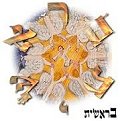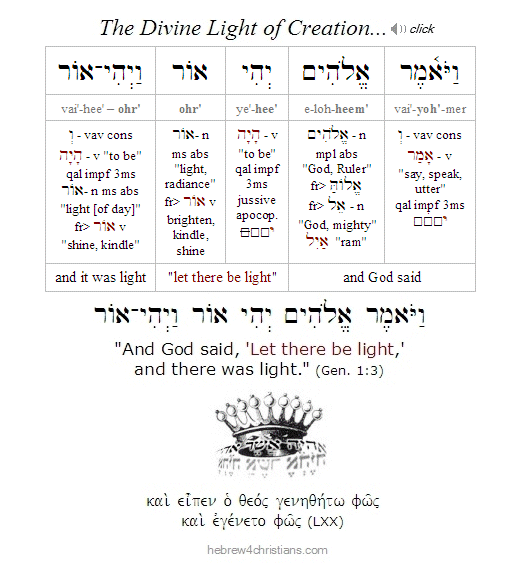|
During Simchat Torah ("Joy of the Torah") we read the last portion of the Torah (V'zot Haberakhah) as well as the first part of the first portion (Bereshit) to symbolize that Talmud Torah - the study of Torah - never ends.
Note: The word bereshit (בְּרֵאשִׁית) can mean "in the beginning" or "at the start" or "at the head of (all things)," etc. Notice the term rosh (ראשׁ, "head") appears embedded in the word as its shoresh (root). In Jewish tradition, the word can refer to either the first weekly Torah portion (parashah) in the annual Jewish cycle of Torah reading (called "parashat Bereshit") or to the first book of the Torah itself (called "Sefer Bereshit"). When used to refer to the first book of the Torah, bereshit is sometimes called sefer rishon (the First Book) or sefer beri'at ha'olam (the Book of the Creation of the world). The ancient Greek translation of the Torah (i.e., the Septuagint) called the book "Genesis" (Γένεσις: "birth", "origin") instead of using the translation of the first Hebrew word (בְּרֵאשִׁית), i.e., ἐν ἀρχῇ, for the book's title. The term "Genesis" was used in subsequent Latin and English translations of the book. There are fifty chapters in Bereshit (20,512 words, 78,064 letters) that are divided into twelve weekly readings.
Creation - Past Tense or Present Tense?
Sometimes we may be tempted to think of Creation as something "past tense." God created everything and then "stood back" to watch the drama of cosmic history unfold... This is an incorrect way of thinking about creation, however, since God not only created the universe but is also continually creating it yesh me'ayin - out of nothing (see Heb. 1:3). And since parashat Bereshit is centered on creation, it is therefore centered on Yeshua Himself, of whom it is written: "all things were created by him, and for him" and in Him all things consist (συνεστηκεν, lit. "stick together") (Col. 1:16-17). Creation begins and ends with the redemptive love of God as manifested in the Person of Yeshua our Messiah....
"God creates out of nothing, wonderful, you say: yes, to be sure, but he does what is still more wonderful: he makes saints out of sinners." -- The Journals of Søren Kierkegaard: A Selection, no. 209, 1838 entry
The Hakafah of Torah
So "round and round and round" the year we go... This week we begin reading the Torah again -- right from the beginning -- but this time we'll be reading for the new Jewish year! The sages have wisely said that you cannot compare studying the Torah for the 49th time to studying it for the 50th time... May the God of Israel grant you hatzlachah (הַצְלָחָה, "success") as you honor Him through talmud Torah, chaverim (2 Tim. 2:15, 3:16).

Since we are at the very beginning, let's look at the very first word of the entire Torah, the Hebrew word Bereshit (בראשׁית). These six letters are sometimes compared to the six days of creation. The first and last two letters form the word brit (covenant) while the remaining inner letters form the word esh (fire), suggesting that the act of creation itself is a "Covenant of Fire." Here's a simple diagram to show the relationship:

Words created the universe -- or rather, the Word of God did (בְּרֵאשִׁית הָיָה הַדָּבָר). When the Divine Voice (i.e., the Word of God) spoke cosmic Light into existence (Gen. 1:3), God was not creating the physical light of the Sun or the Moon, since the heavenly bodies were created later (Gen. 1:14). This supernal light was the first expression of God's handiwork outside of Himself, His first revelation of contingent existence (i.e., existence that owes its source, continuance, and end to God's transcendent power and will). The Divine Light forms the canvass, if you will, of God's portraiture of creation (in three-dimensional terms, the Divine Light forms a sort of "container" that becomes the "house" of Creation). Among other things, this means that ultimate reality is grounded in the Source of Light, Love, and Truth -- regardless of how dark the present hour may appear.
Hebrew Lesson
Genesis 1:3 Hebrew reading lesson (click):
|





